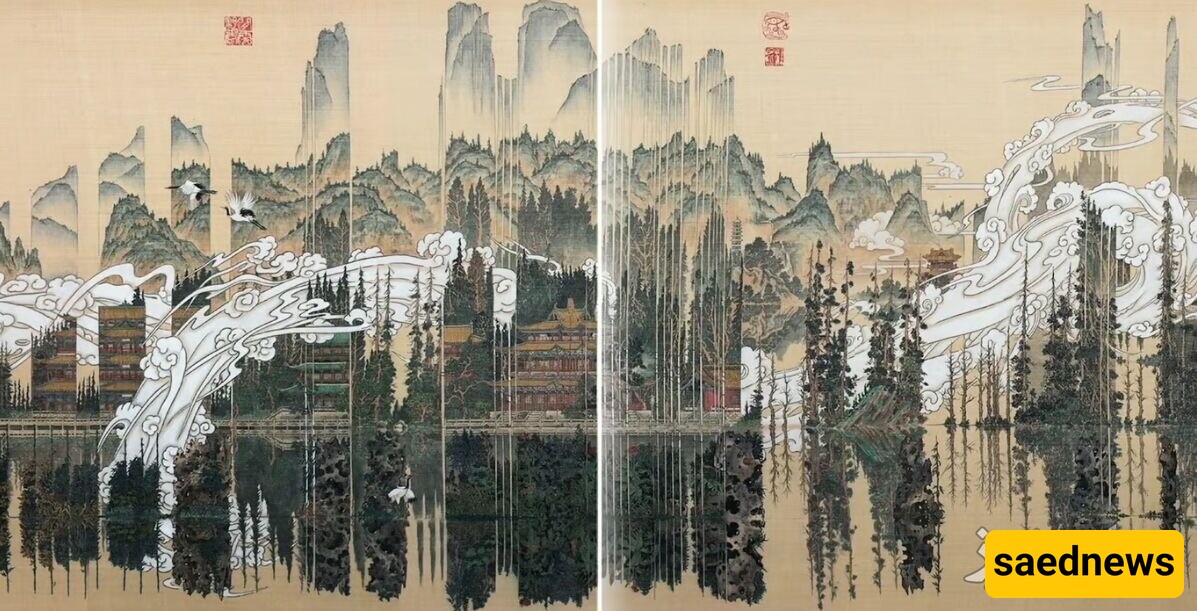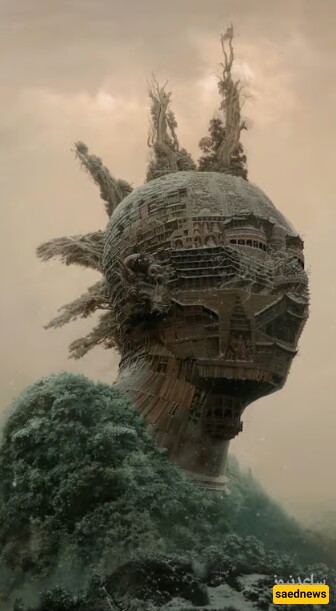The intricate works of Du Kan merge traditional Chinese artistic motifs with bold contemporary concepts, blurring the boundaries between different media.

According to Saed News, citing Digiato, Digital Renaissance of China is a collection exploring new artistic currents in contemporary Chinese art, developed in collaboration with East West Bank. This article focuses on Du Kan, an artist whose work dissolves the barriers between painting, architecture, and rock music, resulting in captivating creations.
Born in Suining, Sichuan, in 1982, Du Kan graduated from the High School Affiliated with the China Academy of Art before earning his bachelor’s degree in oil painting from the Central Academy of Fine Arts in Beijing in 2007.

One of Du Kan’s most renowned series, Revelry of the Gods of Rock (众神闹), showcases his passion for music, Buddhist and Confucian architecture, and oil painting. This collection features temple-like portraits of Chinese rock musicians, reflecting a transformational periodin his upbringing—a time when he and his generation were shaped by a fusion of traditional values and Western ideals.
"Those of us born in the 1980s were deeply influenced by traditional Buddhist and Confucian values, yet we also grew up under the immense influence of Western ideas," Du Kan explained in an interview with CNN. "We are living through a major transformation in China. Through rock musicians, I aimed to express themes of freedom, democracy, critical thinking, and the courage to challenge the past."
In his series Scores of Landscapes (谱山水), Du Kan integrates traditional Chinese landscape painting with contemporary music elements, creating a seamless fusion of visual and auditory experiences.
At first glance, the landscape scrolls in this collection appear serene and timeless, as if frozen in thousands of years of history. However, they actually represent pieces of music—tense, melancholic, atonal, and even eccentric compositions.
"Playing music is my only hobby. I completely translate music theory into painting. In reality, they are interconnected. A painter composes music with pigments, just as a musician paints with sound—it’s like translating between different languages."
Du Kan applies his music composition techniques to painting, transforming visual sound wavesinto traditional Chinese landscapes. These paintings and compositions ultimately come together in multimedia projects, presented through videos or animations.
His approach underscores the interplay between painting and music, making it difficult to separate one from the other.
"I believe today’s audience leans toward visual media because images convey information faster than music. In our fast-paced society, visual content delivers messages more quickly and directly than sound," he told a radio interview.
Du Kan’s work has garnered significant international attention. His collaboration with advertising agency Saatchi & Saatchi earned him a Gold Award at the One Show Advertising Awards, and in 2020, he was nominated for the Sovereign Asian Art Prize in Hong Kong.
Although he acknowledges the advantages of digital technology in his creative process, he consciously avoids reliance on AI-generated art. Instead, he focuses on crafting unique sounds and performances, believing that no software can replicate the human touch.
"Modern digital technology is precise and rarely makes mistakes, unlike humans, who are prone to error. But true beauty lies in imperfections—the twists, turns, and happy accidents. It is in our mistakes that we find the raw material to express the essence of our humanity."

